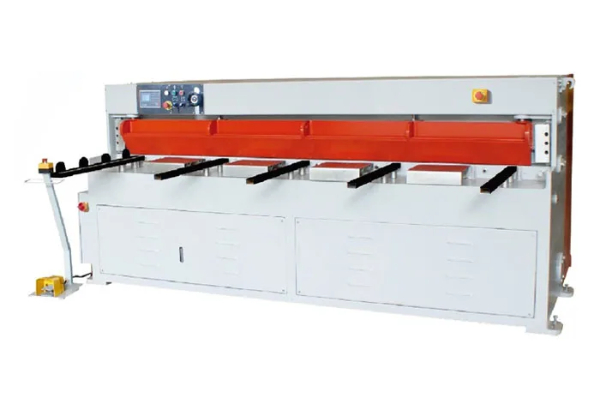
Crafting Curves- Achieving Smooth Transitions with Press Metal Machines
- By:Metmac
- 2024-05-13
- 149
In the realm of metalworking, precision and finesse are paramount. Among the various techniques used to shape and form metal, press metal machines have emerged as a versatile and efficient solution. However, achieving smooth transitions between different sections of metal presents a unique challenge, requiring a thorough understanding of the process and specific techniques. The article “Crafting Curves: Achieving Smooth Transitions with Press Metal Machines” delves into this intricate skill, offering valuable insights and guidance for metalworkers.
Principle of Operation
Press metal machines utilize a combination of pressure and dies to deform metal into desired shapes. The dies, which are typically made of hardened steel, come in a variety of shapes and sizes, allowing for the creation of complex geometric forms. The machine applies hydraulic or mechanical force to the dies, which press against the metal, causing it to conform to the die’s contours.
Factors Influencing Transition Smoothness
Several factors influence the smoothness of transitions between different sections of metal in press metal operations.
Material Properties
The characteristics of the metal being worked, such as its thickness, strength, and ductility, play a crucial role. Thinner metals require less force to deform, while thicker metals necessitate higher pressure, which can lead to uneven deformation and rough transitions.
Die Design
The shape and configuration of the dies used have a significant impact on transition smoothness. Dies with sharp edges or abrupt contours can create sharp corners or ridges in the metal. Conversely, dies with rounded edges and gradual transitions promote smooth and seamless deformation.
Force Application
The amount and distribution of force applied to the metal during the pressing process are critical. Excessive force can cause the metal to rupture or tear, while insufficient force may result in incomplete deformation or buckling. The even distribution of force throughout the transition area helps ensure smooth transitions.
Tool Wear
As the dies and other tools used in press metal machines undergo repeated use, they can experience wear and tear. Worn or damaged dies can produce imperfections or inconsistencies in the metal surface, leading to rough transitions between sections.
Techniques for Enhancing Transition Smoothness
To achieve smooth transitions with press metal machines, several techniques can be employed.
Multi-Step Pressing
In this technique, the metal is deformed in multiple stages using dies of gradually changing shapes. Each stage helps smooth out any imperfections or irregularities created in the previous step, resulting in a progressively smoother transition.
Contour Dies
Contour dies are specially designed with curved or tapered surfaces that gradually transition between different sections of the metal. These dies help minimize sharp edges and promote even deformation, leading to smooth and seamless transitions.
Heated Pressing
Applying heat to the metal before or during the pressing process can make it more pliable and reduce its resistance to deformation. This helps achieve smoother transitions and reduce the risk of cracking or tearing.
Lubrication
Using lubricants between the metal and the dies reduces friction and prevents sticking, facilitating smooth movement of the metal during the pressing process. Proper lubrication also helps extend the lifespan of the dies and tools.
Conclusion
Crafting smooth transitions with press metal machines requires a comprehensive understanding of the process and careful consideration of various factors. By employing the techniques described in this article, metalworkers can overcome the challenges associated with transition smoothness, producing high-quality metal components with exceptional precision and aesthetic appeal. With continued innovation and advancements in technology, press metal machines will continue to play a vital role in the manufacturing industry, enabling the creation of complex and intricate metal structures with unparalleled accuracy and efficiency.
-
Advanced Sheet Metal Rolling, Cutting, and Folding Machines for Efficient Fabrication
2025/10/22 -
High-Precision Sheet Metal Bending and Cutting Solutions for Modern Manufacturing
2025/10/22 -
High-Precision Solutions from Leading Sheet Metal Cutting Machine Manufacturers
2025/09/11 -
Reliable Sheet Metal Equipment for Sale to Support Precision Fabrication
2025/07/17
-
Advanced Sheet Metal Rolling, Laser Cutting, and Folding Machines for Precision Fabrication
2025/10/31 -
High-Performance Sheet Metal Bending and Cutting Machines for Modern Fabrication
2025/10/31 -
High-Quality Sheet Metal Equipment for Sale: Efficient Solutions for Modern Manufacturing
2025/10/31 -
High-Performance Sheet Metal Equipment for Sale: Forming and Shearing Solutions for Modern Fabrication
2025/10/22
-
A Guide to the Latest Innovations in Sheet Metal Folding Machines
2024/11/29 -
Key Features to Consider When Investing in a Sheet Metal Folding Machine
2024/11/28 -
Enhancing Precision with Advanced Sheet Metal Folding Machines
2024/11/27 -
How to Choose the Right Sheet Metal Folding Machine for Your Workshop
2024/11/26






